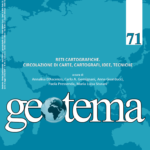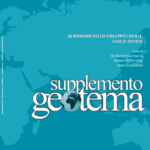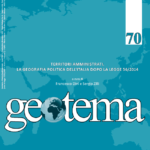Ilaria Greco
Transizione energetica e uso efficiente delle risorse nelle aree portuali: stato dell’arte e prospettive in Italia
Le aree portuali sono da sempre sistemi fortemente energivori, con fabbisogni e consumi elettro-energetici che nel tempo hanno raggiunto valori complessivi di decine di megawatt, con un notevole ed allarmante impatto ambientale ed economico. Ciò ha fatto sì che il tema della «sostenibilità energetica» a medio e lungo termine si sia imposto come imperativo globale non solo nella gestione degli impianti e delle operazioni portuali, ma dell’intero sistema portuale con evidenti interconnessioni in tema di pianificazione urbano-portuale. La recente riforma (Decreto Legislativo 169/2016), oltre a imporre una riorganizzazione del sistema di governance, riconfigura il ruolo delle Autorità di sistema portuale (AdSP), evidenziando nuove responsabilità in materia di sostenibilità energetica ed ambientale nel rispetto del quadro normativo nazionale e comunitario. L’obiettivo è la trasformazione delle aree portuali in distretti produttivi tendenti a emissioni Zero, avviando una transizione energetica che porti non solo ad aumentare i livelli di efficienza operativa, mitigando l’impatto ambientale, ma ad auto-generare in parte (o in tutto) il fabbisogno energetico da un mix di fonti rinnovabili. Il presente lavoro si propone di indagare lo stato dell’arte della pianificazione, degli strumenti e dei progetti in tema di green port nella portualità italiana e le prospettive concrete di sviluppo a partire dal nuovo Documento di pianificazione energetica ed ambientale del sistema portuale (DEASP) previsto dalla normativa nazionale.
Energy Transition and Efficient Use of Resources in Port Areas: State of the Art and Prospects in Italy
The ports have always operated strongly energy-intensive systems, with electro-energy needs and consumption which over time have reached total values of tens of megawatts, with a significant and worrying environmental and economic impact. This has meant that the issue of «energy sustainability» in the medium and long term has established as a global imperative not only in the management of structures and port activities, but of the entire port system with evident interconnections in terms of urban-port planning. The recent reform (Legislative Decree 169/2016), in addition to imposing a reorganization of the governance system, reconfigures the role of the Port System Authorities (AdSP), highlighting new responsibilities regarding energy and environmental sustainability according to the national and community framework. The goal is the transformation of port areas into production districts tending to zero emissions, initiating an energy transition that leads not only to increase levels of operational efficiency, mitigating the environmental impact, but to self-generating in part (or in all) energy needs from a mix of renewable sources. This work aims to investigate the state of the art of planning, tools and projects on the subject of green ports in Italian ports and the development prospects starting from the new Document of energy and environmental planning of the port system (DEASP) required by national legislation.
Transition énergétique et utilisation efficace des ressources dans les zones portuaires : état de l’art et perspectives en Italie
Les zones portuaires ont toujours été des systèmes très énergivores, avec des besoins et des consommations électro-énergétiques qui au fil du temps ont atteint des valeurs globales de dizaines de mégawatts, avec un impact environnemental et économique significatif et alarmant. Cela signifie que la question de la « durabilité énergétique » à moyen et à long terme s’est imposée comme un impératif mondial non seulement dans la gestion des installations et des opérations portuaires, mais dans l’ensemble du système portuaire avec des interconnexions évidentes en termes de planification urbaine-portuaire. La récente réforme (Décret législatif 169/2016), en plus d’imposer une réorganisation du système de gouvernance, reconfigure le rôle des Autorités du Système Portuaire (AdSP), mettant en évidence de nouvelles responsabilités en matière de durabilité énergétique et environnementale dans le respect du cadre réglementaire national et communautaire. L’objectif est la transformation des zones portuaires en districts de production tendant à zéro émission, initiant une transition énergétique qui conduit non seulement à augmenter les niveaux d’efficacité opérationnelle, à atténuer l’impact environnemental, mais à s’auto-générer en partie (ou au total) les besoins énergétiques d’un mélange de sources renouvelables. Ce travail vise à étudier l’état de l’art de la planification, des outils et des projets dans le domaine du port vert dans le port italien et les perspectives de développement concrètes à partir du nouveau Document de planification énergétique et environnementale du système portuaire (DEASP) requis par la législation nationale.
Parole chiave: sistemi portuali, pianificazione sostenibile, progetti green, porti ed energie rinnovabili
Keywords: port systems, sustainable planning, green projects, ports and renewable energies
Mots-clés : systèmes portuaires, planification durable, projets verts, ports et énergies renouvelables









